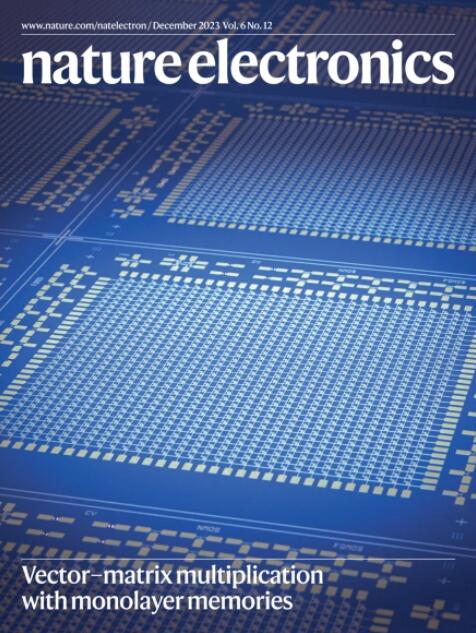Terahertz sensing based on the nonlinear electrodynamics of the two-dimensional correlated topological semimetal TaIrTe4
IF 40.9
1区 工程技术
Q1 ENGINEERING, ELECTRICAL & ELECTRONIC
引用次数: 0
Abstract
The development of terahertz-sensing technologies has been limited by the lack of sensitive, broadband and fast terahertz detectors. Thermal bolometers are bulky and slow, whereas electronic terahertz detectors (such as Schottky diodes) are fast, but their sensitivity degrades quickly outside a narrow frequency window. Here, we show that a two-dimensional correlated topological semimetal, tantalum iridium telluride (TaIrTe4), has a large room-temperature nonlinear Hall effect and that the interaction between this effect and terahertz nonlinear electrodynamics can be used as a mechanism for terahertz sensing. Our photodetectors exhibit a high sensitivity (noise-equivalent power of around 1 pW Hz−1/2) and a large zero-bias responsivity (around 0.3 A W−1) over a broadband spectral range (0.1–10 THz) at room temperature with an intrinsic ultrafast response time (picoseconds). The zero-bias responsivity and noise-equivalent power performance can be further improved (to 18 A W−1 and 0.05 pW Hz−1/2, respectively) by introducing gate-tunable electron correlations. Atomically thin layers of a correlated topological semimetal exhibit a nonlinear Hall effect that can be used to fabricate terahertz photodetectors with a room-temperature responsivity of 0.3 A W−1, a broadband terahertz range and a picosecond response time.


基于二维相关拓扑半金属TaIrTe4非线性电动力学的太赫兹传感
由于缺乏灵敏、宽频和快速的太赫兹探测器,太赫兹传感技术的发展受到了限制。热辐射热计体积庞大,速度缓慢,而电子太赫兹探测器(如肖特基二极管)速度很快,但在狭窄的频率窗之外,它们的灵敏度会迅速下降。在这里,我们证明了二维相关拓扑半金属碲化钽铱(TaIrTe4)具有很大的室温非线性霍尔效应,并且这种效应与太赫兹非线性电动力学之间的相互作用可以用作太赫兹传感的机制。我们的光电探测器在室温下具有高灵敏度(噪声等效功率约为1 pW Hz−1/2)和大零偏响应性(约0.3 a W−1),在宽带光谱范围(0.1-10太赫兹)内具有固有的超快响应时间(皮秒)。通过引入栅极可调谐电子相关,可以进一步提高零偏响应性和噪声等效功率性能(分别为18 A W−1和0.05 pW Hz−1/2)。
本文章由计算机程序翻译,如有差异,请以英文原文为准。
求助全文
约1分钟内获得全文
求助全文
来源期刊

Nature Electronics
Engineering-Electrical and Electronic Engineering
CiteScore
47.50
自引率
2.30%
发文量
159
期刊介绍:
Nature Electronics is a comprehensive journal that publishes both fundamental and applied research in the field of electronics. It encompasses a wide range of topics, including the study of new phenomena and devices, the design and construction of electronic circuits, and the practical applications of electronics. In addition, the journal explores the commercial and industrial aspects of electronics research.
The primary focus of Nature Electronics is on the development of technology and its potential impact on society. The journal incorporates the contributions of scientists, engineers, and industry professionals, offering a platform for their research findings. Moreover, Nature Electronics provides insightful commentary, thorough reviews, and analysis of the key issues that shape the field, as well as the technologies that are reshaping society.
Like all journals within the prestigious Nature brand, Nature Electronics upholds the highest standards of quality. It maintains a dedicated team of professional editors and follows a fair and rigorous peer-review process. The journal also ensures impeccable copy-editing and production, enabling swift publication. Additionally, Nature Electronics prides itself on its editorial independence, ensuring unbiased and impartial reporting.
In summary, Nature Electronics is a leading journal that publishes cutting-edge research in electronics. With its multidisciplinary approach and commitment to excellence, the journal serves as a valuable resource for scientists, engineers, and industry professionals seeking to stay at the forefront of advancements in the field.
 求助内容:
求助内容: 应助结果提醒方式:
应助结果提醒方式:


